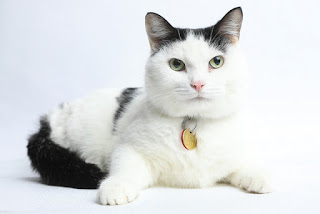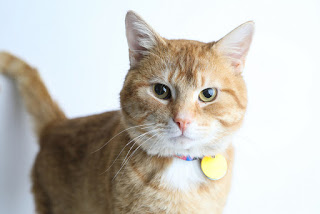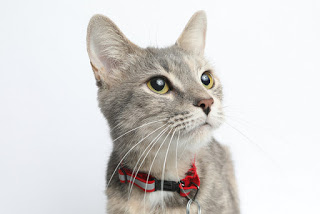April 6, 2017
Top 5 Cat Myths
 It has been thousands of years since the domestication of the modern cat, and in this time these fascinating creatures have been the subject of many myths and legends developed by the humans who love them, as well as those who are wary of them.
It has been thousands of years since the domestication of the modern cat, and in this time these fascinating creatures have been the subject of many myths and legends developed by the humans who love them, as well as those who are wary of them.
From superstitions, such as black cats are bad luck, to the belief that cats always land on their feet — both false, by the way — cats have definitely garnered more than a few interesting mentions throughout human history.
In honor of feline folklores, here is a look at the Top 5 modern-day cat myths:
5: Cats cannot be trained
This is just not true. Cats are incredibly smart creatures and can be taught commands such as sit, stay, and come. They can be taught fun tricks like giving high fives. They can be taught how to walk on a leash… and so much more! Undesirable behaviours, such as inappropriate elimination where a medical reason has been ruled out by a veterinarian, destructive scratching and jumping on counters, for example, can also be addressed through a combination of behavioural and environmental modification. And, you don’t have to be a professional to train your cat: all you need is a little patience, a good feline training resource, and lots of praise and reward. But the best part is that training your cat increases the bond between you two, while providing your cat with some very beneficial mental stimulation.
For more information on training your cat, please check out https://ottawahumane.ca/wp-content/uploads/2015/01/cat-training.pdf
 4: If a cat is purring, it means she is happy
4: If a cat is purring, it means she is happy
Cats purr for a variety of reasons, not just when they are content. Cats can purr when they are hurt or scared, and even when they are giving birth. Interestingly, not only do cats release endorphins when they purr, but the frequency at which they purr at is in a range that has been found to stimulate bone growth and healing. So, it seems purring may be used as self-soothing behaviour for cats. Cats also use purring as a form of communication. As kittens are born blind and deaf, mother cats will purr so that their kittens can find their way to her body for warmth and to nurse, and her kittens can start purring back at mom and siblings at two days old. Some studies have shown that a happily purring cat may even offer health benefits to their human owners, such as lowering stress and blood pressure. So next time your cat is contentedly purring beside you, go ahead and soak in those vibes!
3: Some breeds of cats do not cause allergies
There are many opinions surrounding this issue and many resources that claim there are hypoallergenic cats. This can be misleading, as no cat is 100 per cent hypoallergenic. Cat allergies are not caused by a cat’s fur, but rather a protein found in their skin which comes off in dander. Protein found in saliva and urine can also be a source of allergens. So, whether a cat is short-haired, long-haired, or hairless, there is no guarantee that they won’t trigger allergies in susceptible humans — despite claims to the contrary. The good news though, is that some cats can be less likely to trigger allergies, and there are ways to help reduce allergens in a home.
The bottom line is: if you are considering adopting a cat and have concerns about allergies, make sure to do your research first and consult with your family physician.
2: Indoor cats cannot catch diseases or parasites
Just because a cat doesn’t go outside doesn’t mean they are immune to contagious diseases. Some viruses and bacteria that cause illness in cats can be airborne or brought home to your cat on your clothing. Fleas and other parasites could also be brought home to your cat on your clothing, or even by a pet dog that has come into contact with them while outside. And, as we all know, cats are very skilled at catching small animals that may get into your house, such as bats and mice, and these animals can transmit illness and parasites to your cat as well. So, to ensure your best kitty friend stays protected from illness, talk to your veterinarian. For more ways to keep your cat happy and healthy, please check out: https://ottawahumane.ca/your-pet/animal-tips/cat-owners-responsibilities/
 1: Cats are ‘loners’
1: Cats are ‘loners’
An unfortunate cat stereotype seems to be that cats are independent ‘loners’ that require little more than food and shelter from their human caregivers. While cats do form a different type of relationship with humans than pet dogs for example, studies have shown that cats can form social relationships and strong bonds with their owners. And, as any cat lover will tell you, some cats can be extremely affectionate toward people and other animals. All cats require more than just food and shelter from their owners. Cats show affection by raising their tails upright in a greeting, rubbing with their heads and flanks, and purring when content. Conversely, cats can show signs that they are lonely or lacking attention by excessive grooming or meowing, overeating or not eating, or a decrease in activity and interactions.
To ensure you are providing your indoor cat with the attention and enrichment she needs, check out: https://ottawahumane.ca/your-pet/animal-tips/indoor-cats/
Ashley Hodgins
Coordinator: Feline Services
